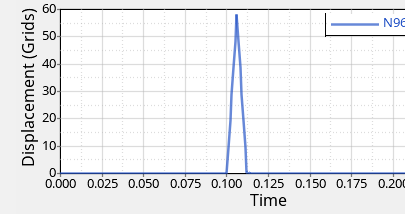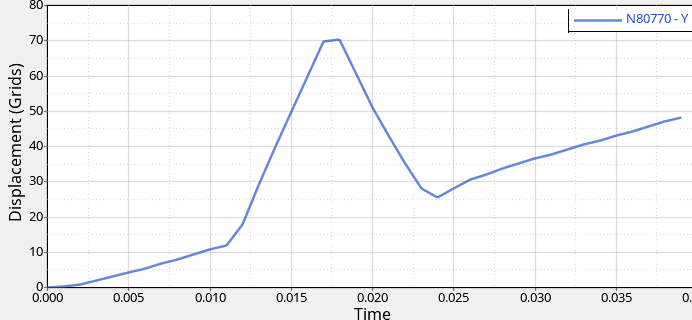Hello,
I work on a suspension construction. I have done done a static analysis due to vehicle mass (I managed to do both linear and lgdisp nonlinear). However, I also need to perform a dynamic analyis due to riding over an obstacle and I have encountered few problems with the simulations:
1) As an excitation I use a displacement of a triangular shape (picture below). It works fine for the direct transient (linear), however, when performing nonlinear direct transient (with and without LGDISP on) the excitation is not as I intend it to be (second picture). The plots show the displacement in the Y direction in nodes where the displacement is applied in the model. The actual input load data is a triangle as in the first picture. Therefore, I do not understand why when performing nonlinear transient the displacement starts to increase before it is larger than 0 in the input data. There should not be any loading applied before 0.100 s and when changing to nonlinear analysis somehow there is a loading. Also the system does not go back to the zero position.


2) the second problem is that when i use nonlinear direct transient the simulations calculates without any problem but when turning on the LGDISP option I encounter convergence problems:
*** ERROR # 4966 ***
Minimum time increment reached,
analysis aborted.
I tried changing the minimum time increment but it does not help. I use TSTEPNL and NLADAPT setup. What options should I change so that the convergence problems does not happen?
Thank you very much in advance for any help.